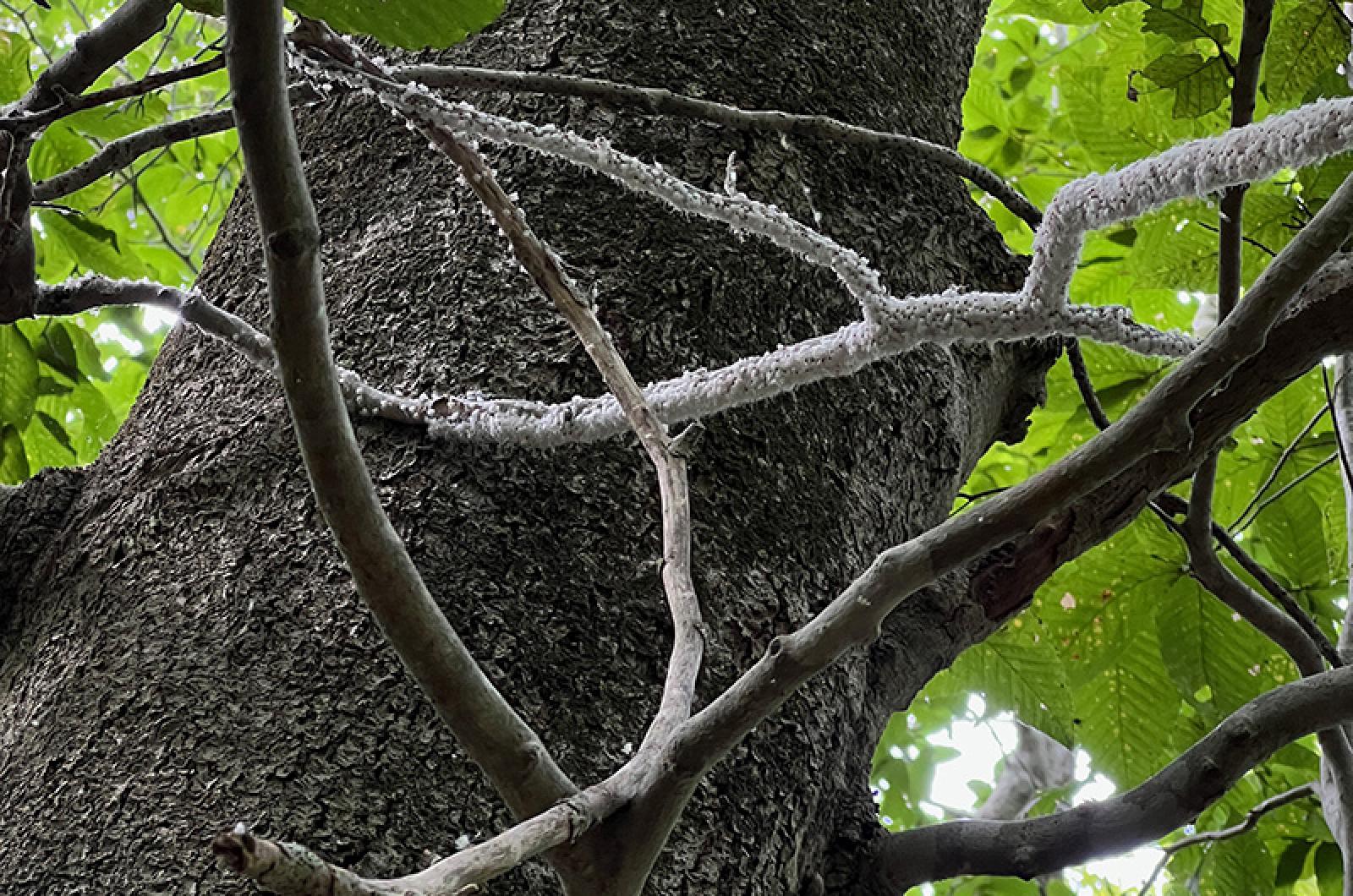Beech trees are having a tough year. It seems if it isn’t one thing, then it’s another.
In the case of some Island beech trees, it isn’t one thing or another: it is two or even three things. The first issue is a foliage fouler called beech leaf disease and is a new problem for beech trees. Beech leaf disease was first detected in Ohio in 2012 and now is found in at least 10 states and in Canada.
The suspected cause of beech leaf disease is a nematode, or worm, native to Japan that was first observed in North American in 2017. The roundworm litylenchus crenatae was not an exact match to the one observed in Ohio, and further study has shown genetic differences that caused scientists to make this found foe its own subspecies.
Beech leaf disease manifests itself by causing dark striping between the veins of the beech leaves. As the disease progresses, leaves become withered, curled and leathery. With the decline of the leaves, the tree canopy thins, branches can develop dieback and eventually the tree can succumb and die, especially the younger ones.
This condition came to Massachusetts in 2020, being detected in Plymouth. It has spread throughout the state and has now been discovered in at least 83 Massachusetts communities, including Aquinnah, Chilmark, West Tisbury and Oak Bluffs. Officials are trying to monitor the spread and ask that if you think you have affected trees, contact the Department of Conservation and Recreation’s Forest Health Program staff at Nicole.Keleher@mass.gov or call 857-337-5173 to report them.
As if beech leaf disease wasn’t enough, consider it the one in the one-two-three punch that is hitting these trees. Next up is the beech blight aphid, an insect curiously known as the boogie-woogie aphid for its propensity to dance en mass to scare off potential predators.
This aphid shakes its booty to frighten its enemies. You might laugh instead of cower, since the aphids appear in such numbers that the dance party can shake the tree and cause quite an entertaining show, Soul Train insect-style.
The numbers of the aphids can be overwhelming for the tree and for the observer. Very light, slightly bluish aphids with long, white filaments can cover branches, making them appear as if covered with snow (except for the dancing).
And those thousands of aphids will have a cascading effect on the tree. Consider their excrement — called honeydew — that drops to the ground and covers the soil and roots below. It wouldn’t be bad if not for the black sooty molds that grow on fungus encouraged by the honeydew. Look below an affected tree for this thick, tar-like gunk and even the ants that might be coming to drink the honeydew.
Recent reports have been the first I have heard of these disco-ing aphids. UMass describes these pests as seldom seen in Massachusetts and uncommon. But here they are, perhaps encouraged by the drought (that third hit), beech leaf disease, or other stressors.
With all the pest problems we’ve had lately, it might seem as if an armageddon is finally here. Will the insects be the survivors that take over? Maybe. And if we are on our last legs, there is nothing else to do than join the aphids and dance, dance, dance on your way out.
Suzan Bellincampi is islands director for Felix Neck Wildlife Sanctuary in Edgartown and the Nantucket Wildlife Sanctuaries. She is also the author of Martha’s Vineyard: A Field Guide to Island Nature and The Nature of Martha’s Vineyard.







Comments
Comment policy »